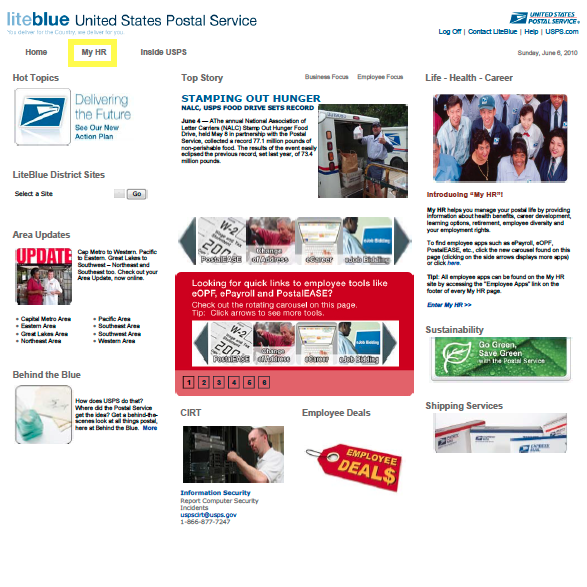The Thrift Savings Plan is the Federal Government’s retirement account for eligible employees.
Thrift Savings Plan (TSP)
The Thrift Savings Plan (TSP) is a retirement savings program for federal employees and members of the uniformed services. It provides you with the opportunity to participate in a retirement savings plan similar to 401(k) plans offered to private sector employees.
Saving for your retirement through the Thrift Savings Plan provides many advantages, including:
- – Automatic TSP payroll deductions;
- – A diversified choice of TSP Funds adn investment options, including professionally designed lifecycle funds;
- – A choice of tax treatments for your TSP contributions:
- – Traditional (pre-tax) contributions and tax-deferred investment earnings, and
- – Roth (after-tax) contributions with tax-free earnings at retirement if you satisfy the IRS
Requirements;
- – Low administrative and investment expenses;
- – Agency TSP contributions, if you are an employee covered by the Federal Employees’ Retirement System (FERS);
- – Under certain circumstances, access to your Thrift Savings Plan savings while you are still employed by the federal
Government;
- – A beneficiary participant TSP account established for your spouse in the event of your death; and
- – A variety of Thrift Savings Plan withdrawal options.
If you are covered by FERS, the Thrift Savings Plan is one part of a three-part retirement package that also includes your FERS basic annuity and Social Security.
If you are covered by the Civil Service Retirement System (CSRS) or are a member of the uniformed services, the TSP is a supplement to your CSRS annuity or military retired pay.
Regardless of your retirement system, participating in the TSP can significantly increase your retirement income. Starting to contribute to your TSP early in your career gives you an advantage, since the longer the money is in your TSP account, the greater the potential increase in the account’s value through compounding of earnings.
How to Establish a Thrift Savings Plan Account
The first contribution to the Thrift Savings Plan — your own contribution or your agency’s — establishes your Thrift Savings Plan account.
If you are a FERS employee who was hired (or a FERS or CSRS employee who was rehired) after July 31, 2010, your agency has automatically enrolled you in the TSP, and 3% of your basic pay is deducted from your paycheck every pay period and deposited in your TSP account, unless you elected to stop or change your contributions.
If you are a FERS employee, you also receive TSP contributions from your agency, so that the total automatic contribution to your TSP account is 7% every pay period.
If you’re an FERS employee who was hired before August 1, 2010 and are not contributing your own money, you still have a TSP account with automatic agency contributions of 1% that are accruing. If you have not already done so, you should choose to contribute your own money and receive agency matching money. In order to do this, must elect this option through your agency to start contributing your own money to your account.
If you’re a CSRS employee or a member of the uniformed services, to establish a TSP account you must elect to contribute through your agency or service. CSRS employees and members of the uniformed services do not receive agency contributions.
Starting your Thrift Savings Plan
Thrift Savings Plan contributions are payroll deductions. You have to make a “contribution election” through your agency or service to:
- – Start your contributions if you were not automatically enrolled; or
- – Increase or decrease your contributions if you were automatically enrolled; change the amount of your employee contributions or tax treatment (i.e., traditional vs. Roth); or stop your contributions.
Here’s how the process works:
- – First, ask your personnel or benefits office whether your agency or service handles Thrift Savings Plan enrollments through paper TSP forms or electronically through automated systems such as Employee Express, EBIS, myPay, LiteBlue, or the NFC PPS.
- – Next, tell your personnel or benefits office how much you want to contribute and the tax treatment you wish to use through the agency’s or service’s electronic system or through the filing of a TSP-1 form. You can get copies of these forms from the TSP website (www.tsp.gov) or from your agency or service.
- – Return the completed forms to your agency or service, not to the TSP. Your agency needs your information to set up your payroll deductions. Your election should be effective no later than the first full pay period after your agency or service receives it.
Withdrawing Money From The Thrift Savings Plan
The Thrift Savings Plan provides several ways to make a TSP withdraw and move your savings:
- – You can make a partial withdrawal of your account in a single payment.
- – You can make a full withdrawal of your account by any one or any combination of the following methods:
- – A single payment
- – A series of monthly payments
- – A life annuity
A combination of any of these three full withdrawal options is called a “mixed withdrawal.” You can transfer all or part of any portion of your Thrift Savings Plan transfer in a single payment or, in some cases, a series of monthly payments. These Thrift Savings Plan transfer can be made to a traditional IRA or to an eligible employer plan by completing the TSP-70 form. Payments to you can be deposited directly into your checking or savings account by means of electronic funds transfer (EFT).
TSP – Spouses’ Rights
If you are a married Thrift Savings Plan participant (even if you are separated from your spouse), spouses’ rights apply to annuity purchases. If you are a married FERS or uniformed services participant with a total TSP account balance of more than $3,500 and you are making a full withdrawal of your account, your spouse is entitled by law to an annuity with a 50% survivor benefit, level payments, and no cash refund. If you choose any other withdrawal option or combination of options by which your entire account balance is not used to purchase this particular type of annuity, your spouse must sign the statement on your withdrawal form that waives his or her right to that annuity.








